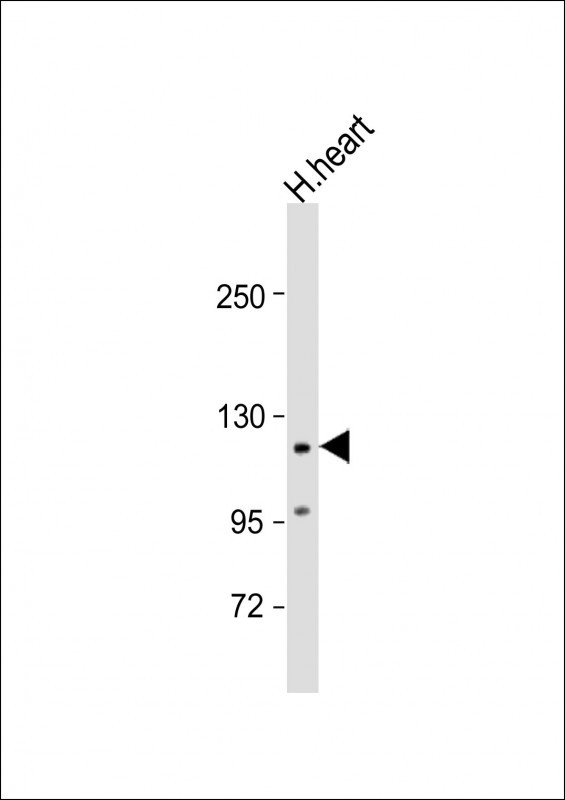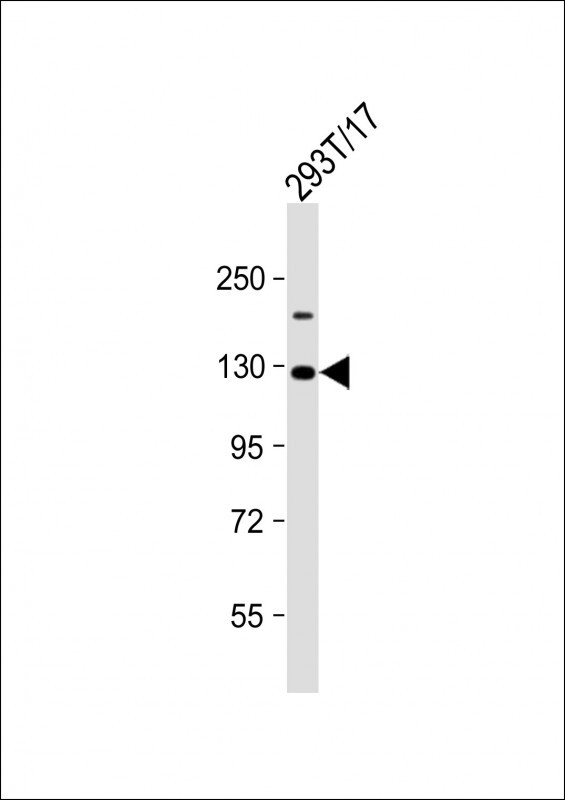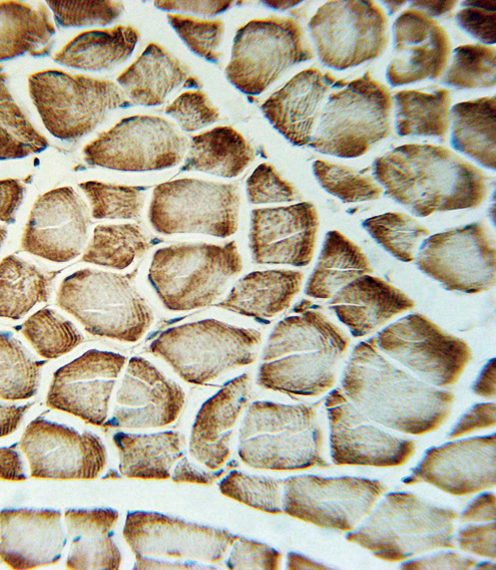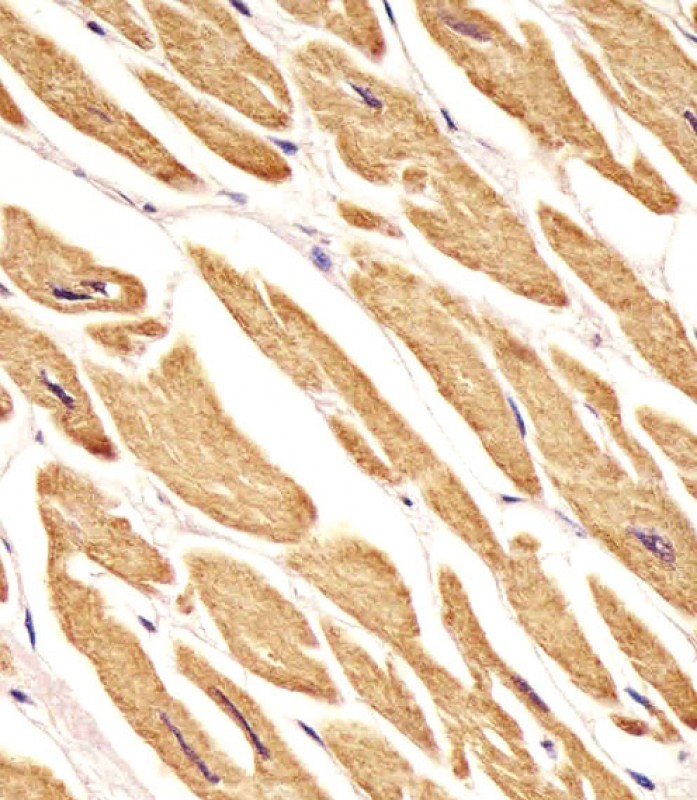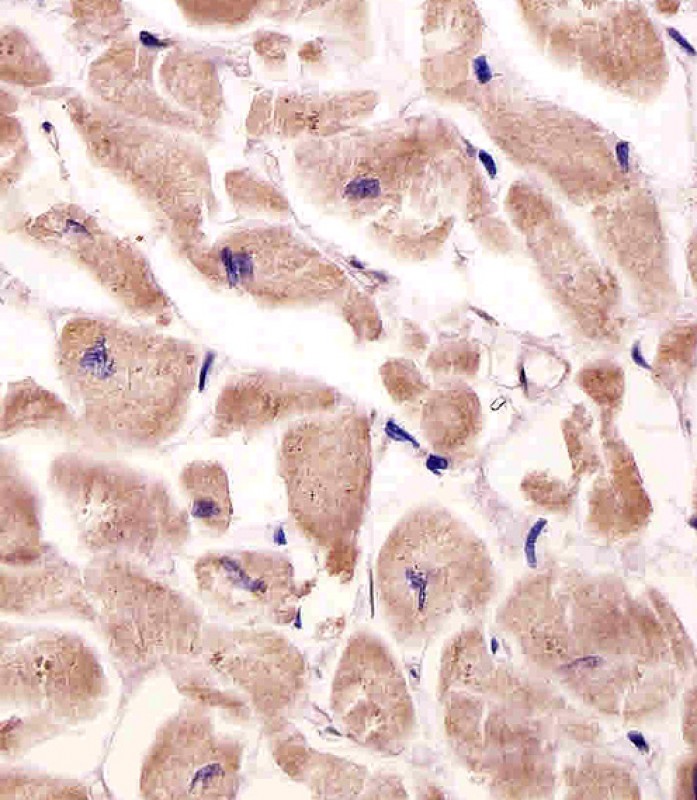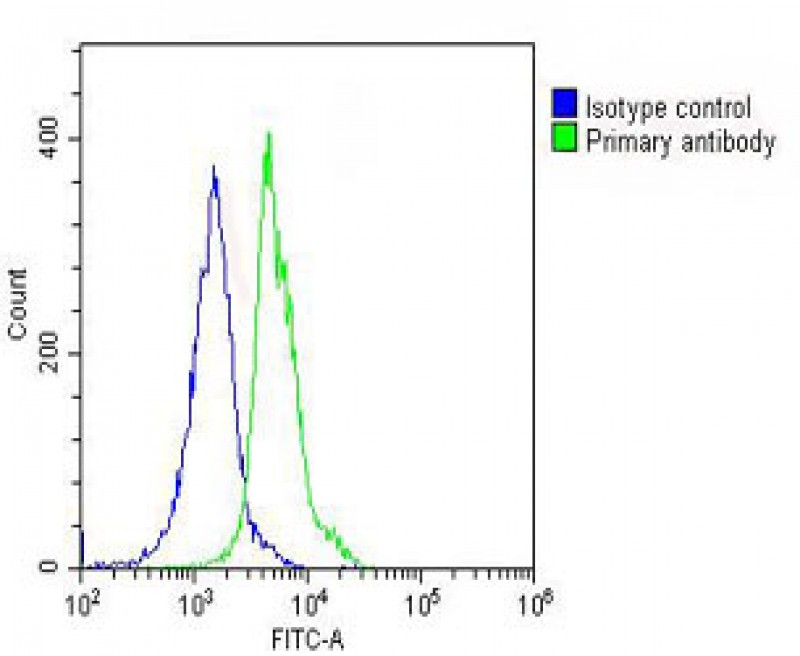VLDLR Antibody (Center)
Affinity Purified Rabbit Polyclonal Antibody (Pab)
- SPECIFICATION
- CITATIONS: 1
- PROTOCOLS
- BACKGROUND

Application
| WB, IHC-P, FC, E |
|---|---|
| Primary Accession | P98155 |
| Other Accession | P35953, NP_003374.3 |
| Reactivity | Human |
| Predicted | Rabbit |
| Host | Rabbit |
| Clonality | Polyclonal |
| Isotype | Rabbit IgG |
| Calculated MW | 96098 Da |
| Antigen Region | 484-510 aa |
| Gene ID | 7436 |
|---|---|
| Other Names | Very low-density lipoprotein receptor, VLDL receptor, VLDL-R, VLDLR |
| Target/Specificity | This VLDLR antibody is generated from rabbits immunized with a KLH conjugated synthetic peptide between 484-510 amino acids from the Central region of human VLDLR. |
| Dilution | WB~~1:2000 IHC-P~~1:25 FC~~1:25 E~~Use at an assay dependent concentration. |
| Format | Purified polyclonal antibody supplied in PBS with 0.09% (W/V) sodium azide. This antibody is purified through a protein A column, followed by peptide affinity purification. |
| Storage | Maintain refrigerated at 2-8°C for up to 2 weeks. For long term storage store at -20°C in small aliquots to prevent freeze-thaw cycles. |
| Precautions | VLDLR Antibody (Center) is for research use only and not for use in diagnostic or therapeutic procedures. |
| Name | VLDLR |
|---|---|
| Function | Multifunctional cell surface receptor that binds VLDL and transports it into cells by endocytosis and therefore plays an important role in energy metabolism. Also binds to a wide range of other molecules including Reelin/RELN or apolipoprotein E/APOE- containing ligands as well as clusterin/CLU (PubMed:24381170, PubMed:30873003). In the off-state of the pathway, forms homooligomers or heterooligomers with LRP8 (PubMed:30873003). Upon binding to ligands, homooligomers are rearranged to higher order receptor clusters that transmit the extracellular RELN signal to intracellular signaling processes by binding to DAB1 (PubMed:30873003). This interaction results in phosphorylation of DAB1 leading to the ultimate cell responses required for the correct positioning of newly generated neurons. Later, mediates a stop signal for migrating neurons, preventing them from entering the marginal zone (By similarity). |
| Cellular Location | Cell membrane; Single-pass type I membrane protein Membrane, clathrin-coated pit; Single-pass type I membrane protein |
| Tissue Location | Abundant in heart and skeletal muscle; also ovary and kidney; not in liver |

Provided below are standard protocols that you may find useful for product applications.
Background
The low density lipoprotein receptor (LDLR) gene family consists of cell surface proteins involved in receptor-mediated endocytosis of specific ligands. This gene encodes a lipoprotein receptor that is a member of the LDLR family and plays important roles in VLDL-triglyceride metabolism and the reelin signaling pathway. Mutations in this gene cause VLDLR-associated cerebellar hypoplasia. Alternative splicing generates multiple transcript variants encoding distinct isoforms for this gene. [provided by RefSeq].
References
Sakai, K., et al. Brain Res. 1276, 11-21 (2009)
Francis, P.J., et al. J. Med. Genet. 46(5):300-307(2009)
Ananyeva, N.M., et al. Blood Coagul. Fibrinolysis 19(6):543-555(2008)
Turkmen, S., et al. Eur. J. Hum. Genet. 16(9):1070-1074(2008)
If you have used an Abcepta product and would like to share how it has performed, please click on the "Submit Review" button and provide the requested information. Our staff will examine and post your review and contact you if needed.
If you have any additional inquiries please email technical services at tech@abcepta.com.














 Foundational characteristics of cancer include proliferation, angiogenesis, migration, evasion of apoptosis, and cellular immortality. Find key markers for these cellular processes and antibodies to detect them.
Foundational characteristics of cancer include proliferation, angiogenesis, migration, evasion of apoptosis, and cellular immortality. Find key markers for these cellular processes and antibodies to detect them. The SUMOplot™ Analysis Program predicts and scores sumoylation sites in your protein. SUMOylation is a post-translational modification involved in various cellular processes, such as nuclear-cytosolic transport, transcriptional regulation, apoptosis, protein stability, response to stress, and progression through the cell cycle.
The SUMOplot™ Analysis Program predicts and scores sumoylation sites in your protein. SUMOylation is a post-translational modification involved in various cellular processes, such as nuclear-cytosolic transport, transcriptional regulation, apoptosis, protein stability, response to stress, and progression through the cell cycle. The Autophagy Receptor Motif Plotter predicts and scores autophagy receptor binding sites in your protein. Identifying proteins connected to this pathway is critical to understanding the role of autophagy in physiological as well as pathological processes such as development, differentiation, neurodegenerative diseases, stress, infection, and cancer.
The Autophagy Receptor Motif Plotter predicts and scores autophagy receptor binding sites in your protein. Identifying proteins connected to this pathway is critical to understanding the role of autophagy in physiological as well as pathological processes such as development, differentiation, neurodegenerative diseases, stress, infection, and cancer.
